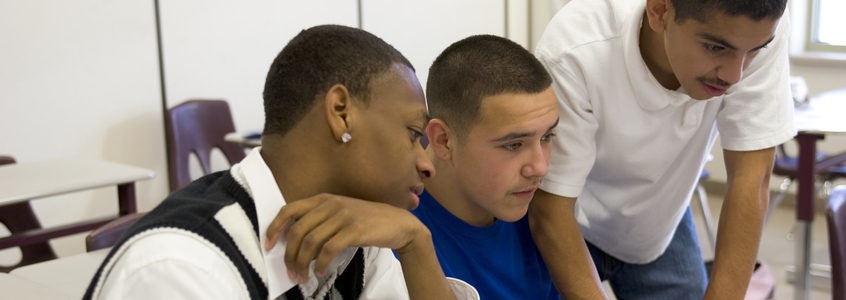- BLOG HOME
- »
- Research Services
- »
- Getting Minority Teenage Boys to Finish High School and Enroll in College

Getting Minority Teenage Boys to Finish High School and Enroll in College
Boys, and teenage, minority boys in particular, have been impacted greatly during the pandemic by a confluence of factors that are threatening to stall their education and impact their future lives and livelihoods, according to a USA Today article. The article features three teenage boys of color tested by the year’s challenges.
Challenges with school re-openings and the pandemic have taken a heavy toll on children around the nation, but particularly on those in Black and Hispanic communities. Several students are highlighted in this story, showing their efforts to succeed and the challenges holding them back.
Teenage Boys Faring Worse Than Girls
According to the article, the five-year graduation rates for Black teenage boys in Chicago Public Schools is 71% — about 15 points behind that of Black female students. While Hispanic teenage boys are about 10 percentage points behind Hispanic teenage girls. White and Asian boys lag behind, too, but by gaps that are roughly half as wide.
Students have found it difficult to focus during the pandemic as they were shifted from school to home schooling settings where, in many cases, parents were unable or unavailable to help and support.
Impacts Extend Into Higher Ed
Impacts are being felt not only in K-12 settings, but in higher ed as well. The National Student Clearinghouse Research Center indicates that students attending college immediately after high school dropped by 6.8% — an unprecedented one-year decline — during the pandemic in 2020. It’s a drop of more than four times the rate in 2019, prior to the pandemic, based on data from about 860,000 graduates from almost 3500 high schools.
The pandemic has clearly disproportionately impacted low-income, high-poverty, and high-minority schools — enrollment declines were 2.3 times higher for students in these settings. The pandemic has reduced access to postsecondary education, especially for students seeking more affordable public sector options, like community colleges. The number of men enrolled at community colleges fell by nearly 15% during fall 2020, more than twice the rate of decline among women, according to the Research Center’s Fall 2020 Current Term Enrollment Estimates.
“Students from disadvantaged schools are showing much higher rates of decline in college enrollment than their more advantaged counterparts,” said Doug Shapiro, Executive Director of the Research Center, in a blog earlier this year.
Opportunities to Focus on Solutions
To help stem the negative impact from this last year in terms of graduation rates and entry into colleges and universities, educators and policymakers need to know the data about the students in their high schools and districts.
In a recent blog, the Research Center’s Doug Shapiro, and Ronn Nozoe, President of the National Association for Secondary School Principals, discuss their concerns and the actions educators and policymakers can take to address the pandemic’s impact.
To learn how Clearinghouse data and services can help your institution and students, contact the Research Center!
“Students from disadvantaged schools are showing much higher rates of decline in college enrollment than their more advantaged counterparts.”
Doug Shapiro
Executive director, National Student Clearinghouse Research Center



